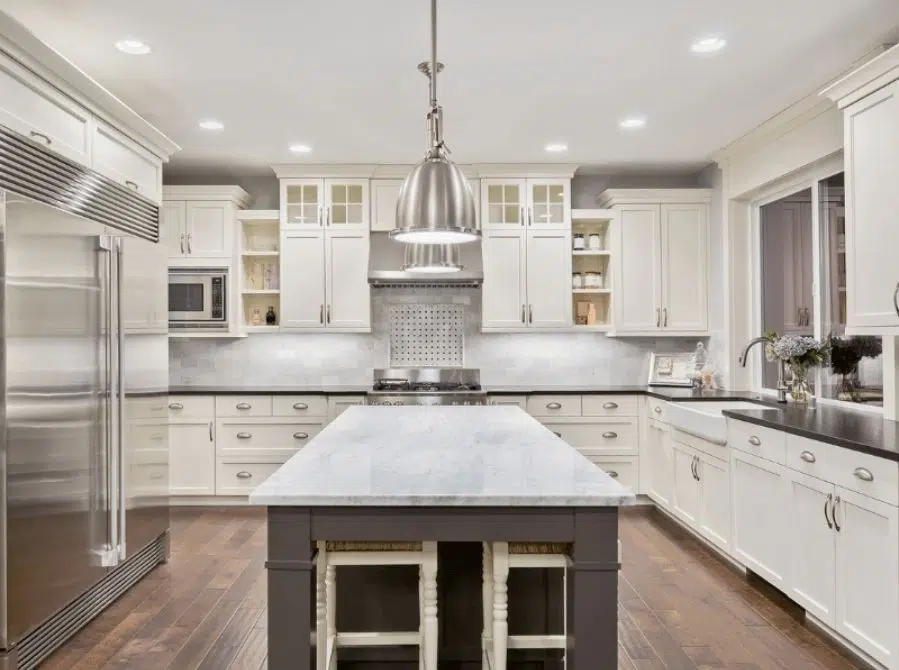Remodel vs. Renovate: What's the Real Difference in Home Improvement?

When you're planning to update your home, you'll often hear the terms "remodel" and "renovate" used. While they might seem like synonyms, there's a key distinction between them that can impact the scope, cost, and outcome of your project. Understanding this difference is crucial whether you're planning a minor refresh or a major overhaul.
So, let's break down what sets remodelin g apart from renovating.
What is Renovating? Restoring and Reviving
Renovation essentially means "to restore to a good state of repair." Think of it as bringing something back to life or making it new again, without fundamentally changing its purpose or structure. Renovation projects typically focus on:
-
Repairing: Fixing broken elements, like a leaky roof, damaged drywall, or faulty plumbing.
-
Refreshing: Updating surfaces with new paint, refinishing hardwood floors, or replacing worn-out carpeting.
-
Replacing: Installing new fixtures like faucets, light fittings, or cabinet hardware that are similar in function to the old ones.
-
Restoring: Bringing historical features of an older home back to their former glory.
Key Characteristics of a Renovation:
-
Focus: Improving the existing condition and appearance.
-
Structural Changes: Usually none, or very minor. The layout and purpose of the space remain the same.
-
Examples:
-
Painting your living room.
-
Refinishing kitchen cabinets and replacing the countertop.
-
Re-tiling a bathroom floor and shower.
-
Replacing old windows with new, energy-efficient ones of the same size.
-
Repairing a damaged deck.
-
The goal of a renovation is to make a space look and function better, often by updating it to current standards or tastes, but without altering its core identity.
What is Remodeling? Transforming and Reconfiguring
Remodeling, on the other hand, means "to change the structure or form of something." This implies a more significant transformation where the design, layout, or even the purpose of a space is altered. Remodeling projects often involve:
-
Altering Layouts: Moving walls, changing the footprint of a room, or creating an open-concept living area.
-
Changing Purpose: Converting a spare bedroom into a home office, or turning an attic into a master suite.
-
Structural Modifications: This can include adding or removing walls (load-bearing or not), raising ceilings, or adding new windows or doors where none existed.
-
Major System Upgrades: Often, remodeling projects might necessitate significant updates to plumbing, electrical, or HVAC systems to accommodate the new design.
Key Characteristics of a Remodel:
-
Focus: Changing the character, layout, or use of a space.
-
Structural Changes: Often involved, ranging from minor to extensive.
-
Examples:
-
Converting a traditional kitchen into an open-concept kitchen by removing a wall.
-
Expanding a bathroom by taking space from an adjacent closet.
-
Adding a new bathroom or bedroom to your home.
-
Turning a basement into a finished family room with a wet bar.
-
Reconfiguring the entire layout of a master suite.
-
A remodel aims to create a "new" space that might be quite different from what was there before.
Why Does the Difference Matter?
Understanding whether your project is a remodel or a renovation is important for several reasons:
-
Scope and Complexity: Remodels are generally more complex, involve more trades, and take longer to complete than renovations.
-
Cost: Due to their increased complexity and potential for structural work, remodels typically have a higher price tag than renovations.
-
Permitting: Remodeling projects, especially those involving structural changes, are more likely to require building permits from your local municipality. Renovations might only require permits for specific work like electrical or plumbing updates.
-
Professional Help: While some simple renovations can be DIY projects, remodels often necessitate the expertise of general contractors, architects, and specialized tradespeople.
-
Return on Investment (ROI): Both can improve home value, but the ROI can vary. Strategic renovations (like a minor kitchen refresh) can offer high ROI. Larger remodels (like adding a bathroom) can also significantly boost value but require a larger upfront investment.
Which One is Right for You?
-
Choose Renovation if:
-
You like the current layout of your space but want to update its look and feel.
-
You need to repair or replace worn-out elements.
-
You're working with a more limited budget or timeframe.
-
You want to refresh your home for a quicker sale.
-
-
Choose Remodeling if:
-
The current layout doesn't meet your needs.
-
You want to change the function of a room or add square footage.
-
You're planning a major transformation and are prepared for a more involved project and higher budget.
-
You're looking to significantly customize your home to your lifestyle.
-
Whether you're "making new again" with a renovation or "changing the form" with a remodel, clear goals and good planning are the keys to a successful home improvement project. Knowing the difference helps you communicate more effectively with contractors and set realistic expectations for your exciting home transformation!
Comments on “What's the difference between remodeling and renovating?”